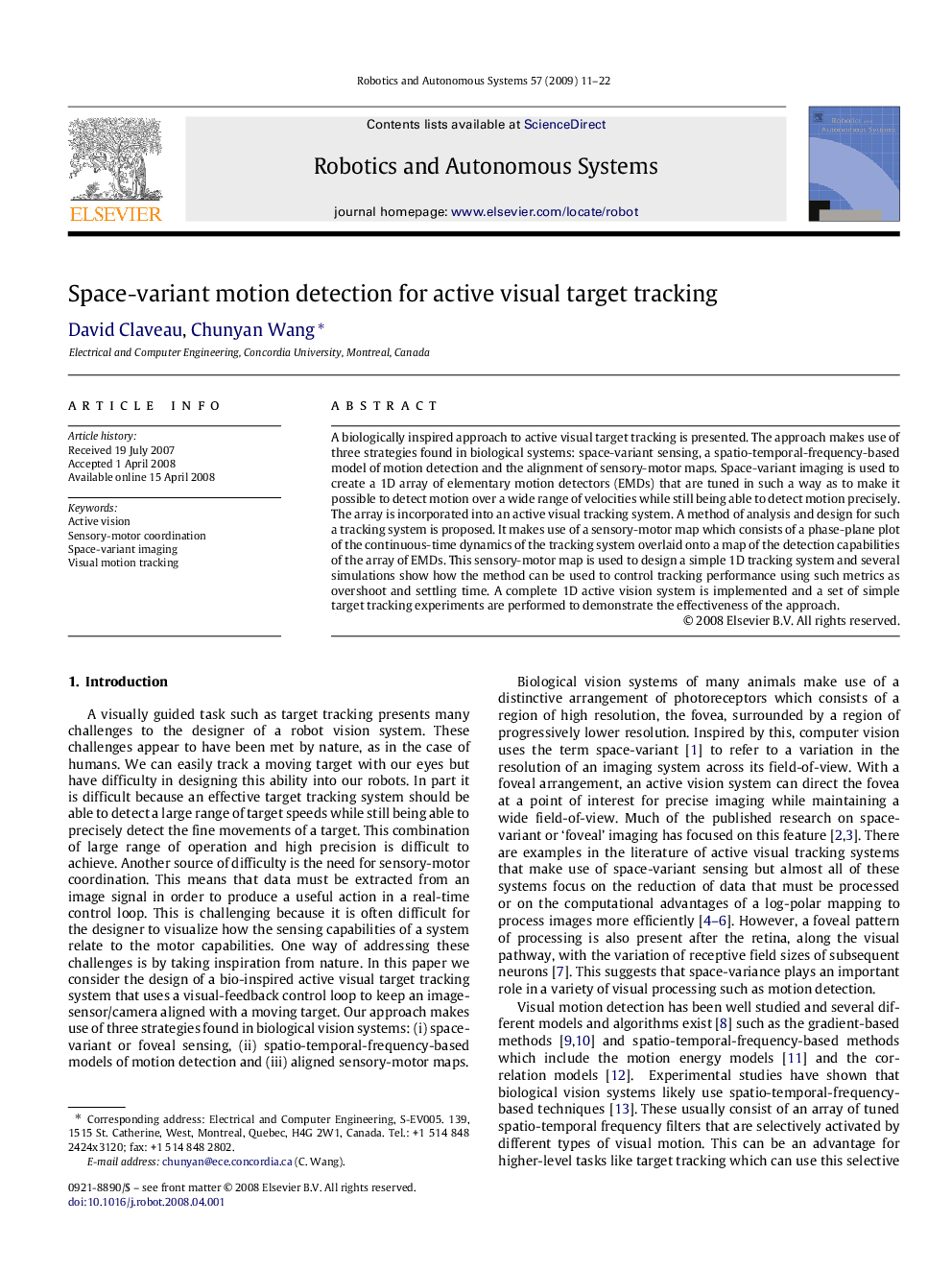| کد مقاله | کد نشریه | سال انتشار | مقاله انگلیسی | نسخه تمام متن |
|---|---|---|---|---|
| 412489 | 679646 | 2009 | 12 صفحه PDF | دانلود رایگان |

A biologically inspired approach to active visual target tracking is presented. The approach makes use of three strategies found in biological systems: space-variant sensing, a spatio-temporal-frequency-based model of motion detection and the alignment of sensory-motor maps. Space-variant imaging is used to create a 1D array of elementary motion detectors (EMDs) that are tuned in such a way as to make it possible to detect motion over a wide range of velocities while still being able to detect motion precisely. The array is incorporated into an active visual tracking system. A method of analysis and design for such a tracking system is proposed. It makes use of a sensory-motor map which consists of a phase-plane plot of the continuous-time dynamics of the tracking system overlaid onto a map of the detection capabilities of the array of EMDs. This sensory-motor map is used to design a simple 1D tracking system and several simulations show how the method can be used to control tracking performance using such metrics as overshoot and settling time. A complete 1D active vision system is implemented and a set of simple target tracking experiments are performed to demonstrate the effectiveness of the approach.
Journal: Robotics and Autonomous Systems - Volume 57, Issue 1, 31 January 2009, Pages 11–22